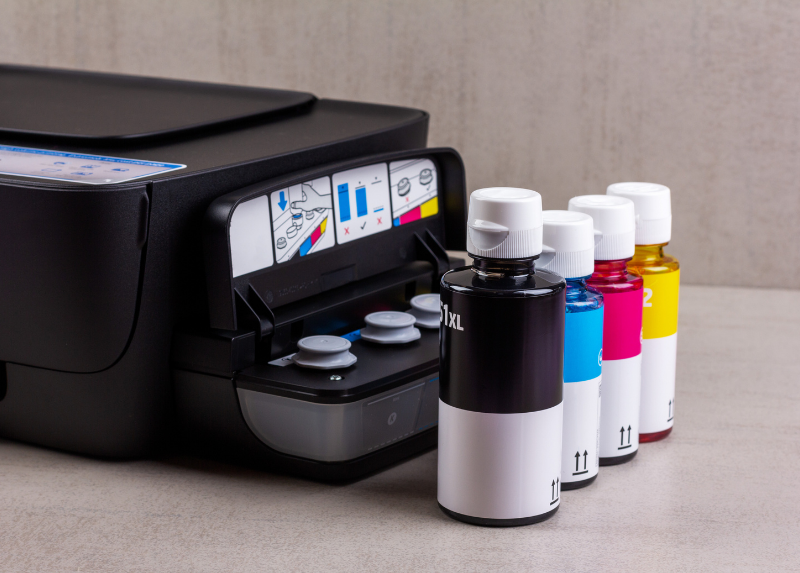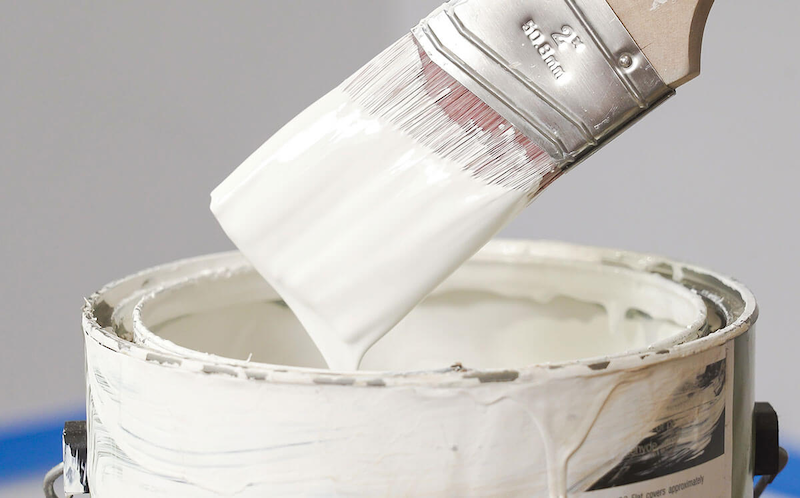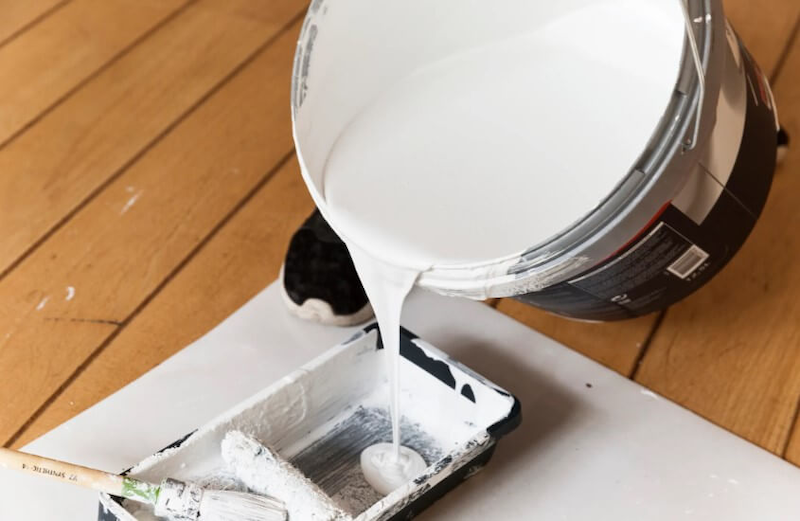What is BOPP film ink diluent? Common types and safety notes | K-Chem
06/06/2025
|
Industry news
BOPP film ink diluent is an indispensable element in the plastic packaging printing industry, especially for food packaging, shopping bags, and labels. Choosing the right ink diluent not only ensures strong ink adhesion and fast drying but also directly affects color durability, aesthetics, and production efficiency. This article will help you clearly understand the concept of BOPP ink diluent, common types, proper usage techniques, and safe storage guidelines.
What is BOPP film?
BOPP film (Biaxial Oriented Polypropylene) is a type of plastic film produced from polypropylene (PP) resin through a two-way stretching process (longitudinal and transverse) to create durability, transparency and high gloss. There are two main types of BOPP film:
- Glossy BOPP film: Smooth, glossy surface, increasing aesthetics and sharpness of prints.
- Matte BOPP film: Matte surface, often used to hide the product inside but still ensure good protection and printing.
Applications:
- Printing and packaging: Laminating on labels, book covers, magazines, food packaging (candy, instant noodles), tape, clothing bags, flower wrapping paper.
- Characteristics: Moisture-proof, air-proof, odorless, non-toxic, environmentally friendly, high durability, good bearing capacity, transparent, easy to print.
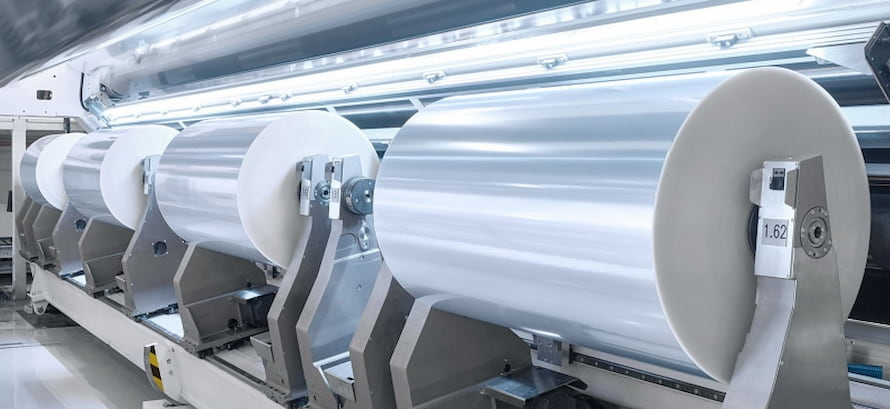
What is BOPP film ink diluent?
Ink diluent is a liquid used to dilute the ink, helping the ink to reach the appropriate viscosity, easily adhere to the BOPP film surface and ensure print quality. For BOPP film, the solvent must be compatible with the ink type (solvent-based ink or water-based ink) and printing technology (gravure or flexo printing).
Common solvents for mixing BOPP film printing ink
Common solvents used for mixing BOPP film printing ink include:
Toluene (C7H8)
Characteristics:
Toluene is a strong organic solvent with excellent solubility for PP plastics and printing inks. It features fast evaporation and a distinctive strong odor. Widely used in gravure printing, it helps ink dry quickly and adhere well on BOPP film.
Advantages:
- Fast drying speed, enhancing printing efficiency
- Strong ink adhesion on BOPP film
- Low cost
Disadvantages:
- Toxic to health
- Highly flammable and environmentally polluting
- Limited use in food packaging applications due to safety concerns
Applications:
Toluene is commonly used as a solvent in BOPP ink formulations for gravure printing, especially with traditional solvent-based inks in corporate packaging.
Ethyl Acetate (C4H8O2)
Characteristics:
Ethyl Acetate is a fast-evaporating solvent used for BOPP film ink dilution. It dissolves nitrocellulose, acrylic resins, and other materials well. Commonly used in flexographic and gravure printing, it is less toxic than toluene and provides good ink adhesion.
Advantages:
- Less toxic compared to toluene
- Quick drying
- Produces glossy ink films with strong adhesion on BOPP
Disadvantages:
- High volatility may cause premature drying on printing plates
- Requires careful control of printing environment
Applications:
Widely used in flexo and gravure printing technologies, especially for food packaging due to its higher safety profile.
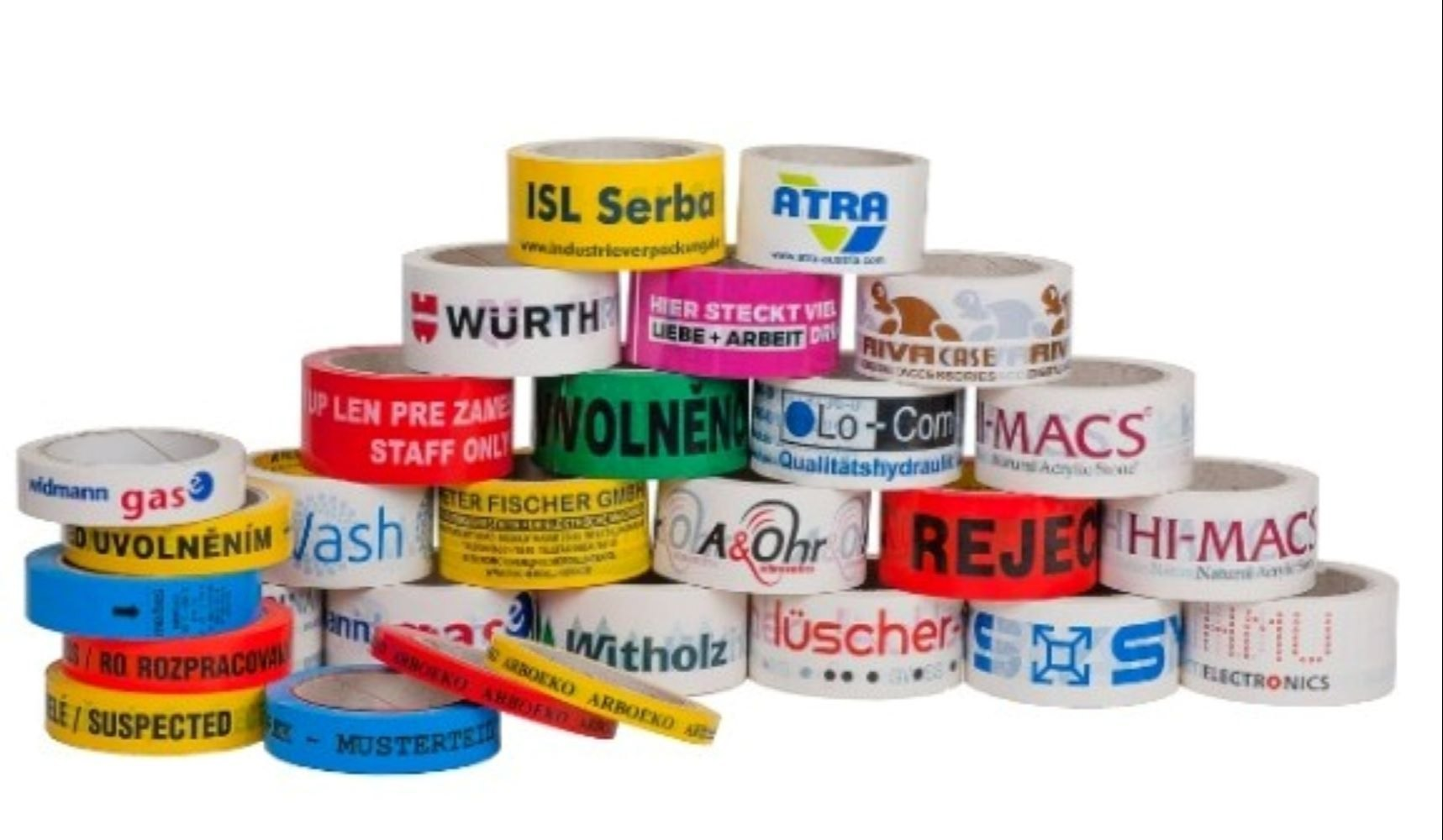
Isopropyl Alcohol (IPA, C3H8O)
Characteristics:
Isopropyl Alcohol (IPA) used as a solvent for BOPP ink has slight polarity, is highly soluble in water and other organic solvents, and evaporates quickly. It is commonly used in water-based inks or to adjust ink viscosity, especially suitable for flexographic printing.
Advantages:
- Helps adjust ink viscosity
- Improves surface wetting properties
- Easily blends with other solvents
Disadvantages:
- Cannot be used as the primary solvent, only as a supporting agent
- Highly volatile, requiring careful storage when not in use
Applications:
IPA is widely used in the flexographic printing industry for water-based inks or solvent-water hybrid inks on BOPP films.
Methyl Ethyl Ketone (MEK, C4H8O)
Characteristics:
Methyl Ethyl Ketone (MEK) is a very strong solvent used for BOPP ink dilution, with rapid evaporation and excellent solubility for various plastics, including polypropylene (PP). It is commonly used in gravure printing to help ink dry quickly and adhere well.
Advantages:
- Extremely fast drying, boosting production speed
- Strong ink adhesion, ideal for challenging materials like BOPP
Disadvantages:
- Toxic and highly flammable
- Strong odor
- Requires careful handling of exhaust fumes during use
Applications:
MEK is used in high-speed gravure printing where fast drying ink on smooth surfaces like BOPP is essential.
Dimethyl Carbonate (DMC, C3H6O3)
Characteristics:
Dimethyl Carbonate (DMC) is a next-generation, low-toxicity solvent for BOPP ink dilution, offering good solubility and evaporation rates comparable to ethyl acetate. It is environmentally friendly and less toxic, commonly used in modern ink systems as a replacement for toluene or MEK. DMC dissolves well, evaporates quickly, and is suitable for gravure and flexographic printing on BOPP films.
Advantages:
- Safer than MEK and toluene
- Environmentally friendly
- Low odor
Disadvantages:
- Higher cost compared to other solvents
- May require blending with co-solvents to optimize solubility for certain plastics
Applications:
Ideal for flexographic and gravure printing with modern ink technologies, often chosen by clean production companies.
Note:
DMC is increasingly favored due to its low toxicity, environmental friendliness, and compliance with safety standards for food packaging printing.
n-Propyl Acetate
Characteristics:
n-Propyl Acetate is a solvent for BOPP ink dilution with a chemical structure similar to ethyl acetate but with a slightly slower evaporation rate. It has a mild, pleasant odor and is used as a substitute for ethyl acetate in certain cases to help control the evaporation speed.
Advantages:
- Allows easy adjustment of ink evaporation rate
- Provides stability under high-speed printing conditions
Disadvantages:
- Higher cost compared to ethyl acetate
- Less common and not readily available from all suppliers
Applications:
Used as a replacement for ethyl acetate when precise drying speed control is needed or when printing on heat-sensitive materials prone to deformation.
Xylene
Characteristics:
Xylene is an aromatic solvent similar to toluene but with a slower evaporation rate. It dissolves well in large molecular weight resins such as alkyd and acrylic. Although less common, it is sometimes used for ink formulation adjustment.
Advantages:
- Effectively dissolves large molecular weight resins
- Stable under high humidity conditions
Disadvantages:
- Strong odor and toxic
- Slow evaporation can cause ink smearing if printing machines are not properly adjusted
Applications:
Less commonly used, but applied in special ink formulations or printing on technical materials requiring precise solvent properties.
Some mixing ratios of BOPP film printing ink for gravure and flexo printing
Usually, a single solvent will not be used to dilute the ink, but many solvents must be combined together to achieve optimal performance. The solvent mixing ratio depends on the type of ink, printing technology, printing machine conditions, and product requirements. Below are some common ratios (for reference only, need to be adjusted according to reality):
Gravure printing
Solvent-based ink: Ink: solvent ratio: 1:0.5 to 1:1 (depending on the required viscosity).
Solvent composition:
- Toluene: 50–70%.
- Ethyl Acetate: 20–30%.
- IPA: 10–20%.
- DMC: 10–30%.
Example: 100 kg of ink can be mixed with 50 kg of solvent (30 kg of toluene + 15 kg of ethyl acetate + 5 kg of IPA or DMC).
Note: BOPP film is usually corona treated (>38 dyne) to increase ink adhesion, so it is necessary to check the viscosity (usually 15–18 seconds measured with a Zahn cup #3) and adjust the solvent to achieve optimal drying and adhesion.
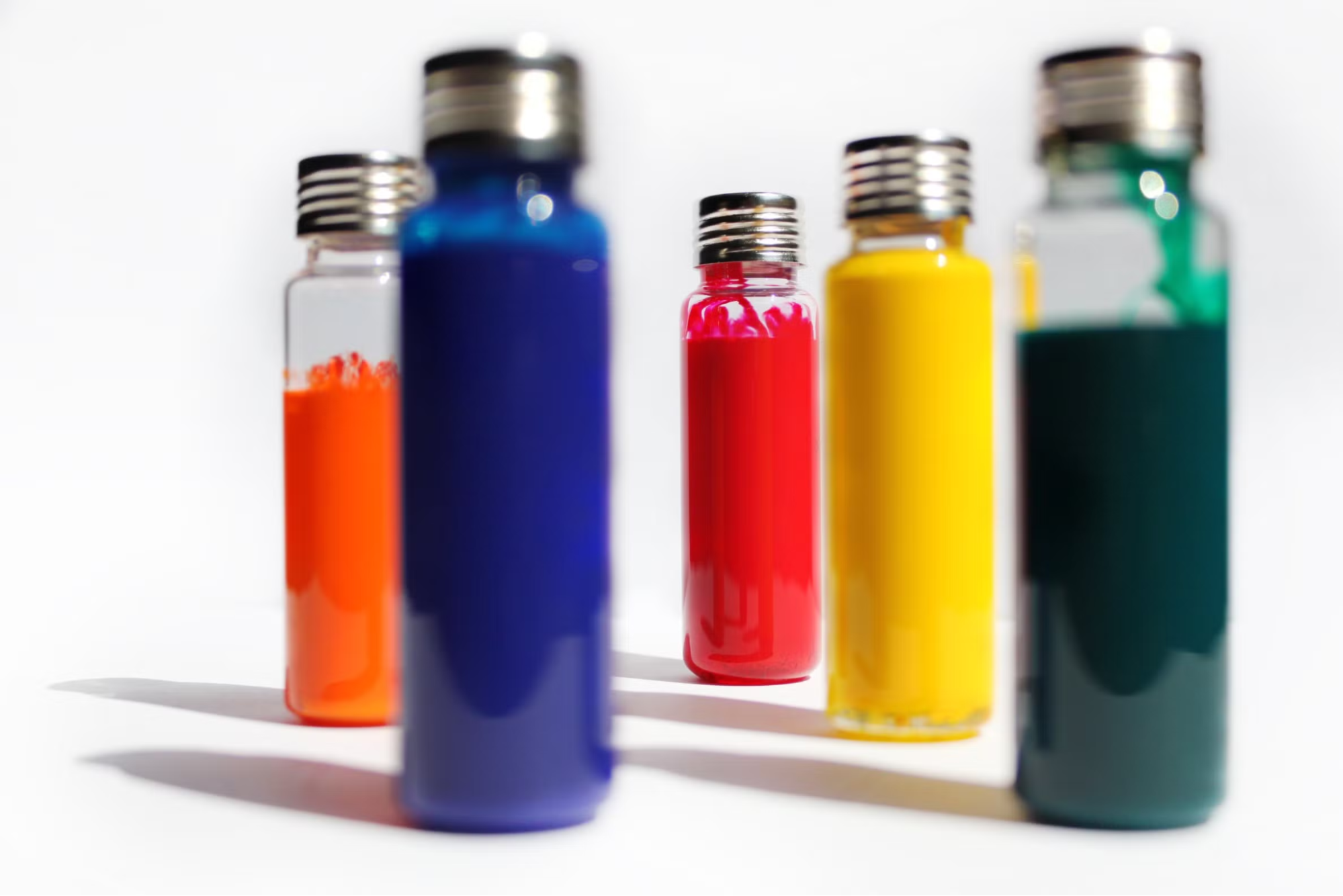
Flexo printing
1 – Solvent-based inks: Ink : solvent ratio: 1:0.3 to 1:0.7.
- Solvent composition:
- Ethyl Acetate: 20-30%.
- IPA or NPA: 40–60%.
- DMC: 10–20% (if environmentally friendly).
- n-Propyl Acetate: 5–10% (to adjust the evaporation rate).
Example: 100 kg of ink mixed with 40 kg of solvent (10 kg of ethyl acetate + 25 kg of IPA or NPA + 5 kg of DMC).
2 – Water-based inks (more common in flexo): Ink: solvent ratio: 1:0.1 to 1:0.3 (mainly water and IPA).
Solvent composition: Water (70–80%) + IPA (20–30%) to increase drying speed.
Note: Flexo printing requires lower viscosity (15–25 seconds measured with Zahn #2 cup for solvent-based inks and 10–15 seconds measured with Zhan #4 for water-based inks), and the solvent must ensure that it does not damage the anilox roller.
3 – Practical adjustment:
- Check the viscosity with a measuring cup (Zahn or Ford).
- Test print on a sample BOPP film to check adhesion, dryness, and color.
- Adjust the solvent ratio depending on the temperature, humidity of the environment, and the speed of the printer.
Recommendation: Use pre-mixed solvents (thinner) to achieve high accuracy in mixing ratio, ensuring fire and explosion safety instead of buying single solvents and mixing them yourself.

Instructions for use and storage of premixed solvents (thinner)
Using premixed solvents
Check before use:
- Make sure the premixed solvent is suitable for the ink type (solvent-based or water-based) and printing technology (gravure/flexo).
- Check the viscosity of the ink after mixing with a viscosity cup (Zahn or Ford).
- Shake the solvent tank well before use to ensure a homogeneous mixture.
Mixing:
- Add the solvent slowly to the ink, stirring well with a stirrer or a clean stirring rod.
- Check the viscosity continuously during mixing to achieve the appropriate level
- Avoid mixing too much solvent which reduces the adhesion of the ink.
Test printing:
- Test printing on BOPP film to check adhesion, dryness, and color quality.
- Adjust the printing speed and drying temperature (if applicable) to optimize.
Safe use:
- Wear gloves, masks, and goggles when working with solvents, especially toluene or MEK (highly toxic).
- Work in a well-ventilated area with an exhaust system to avoid inhaling solvent vapors.
- Avoid direct contact with skin or eyes.
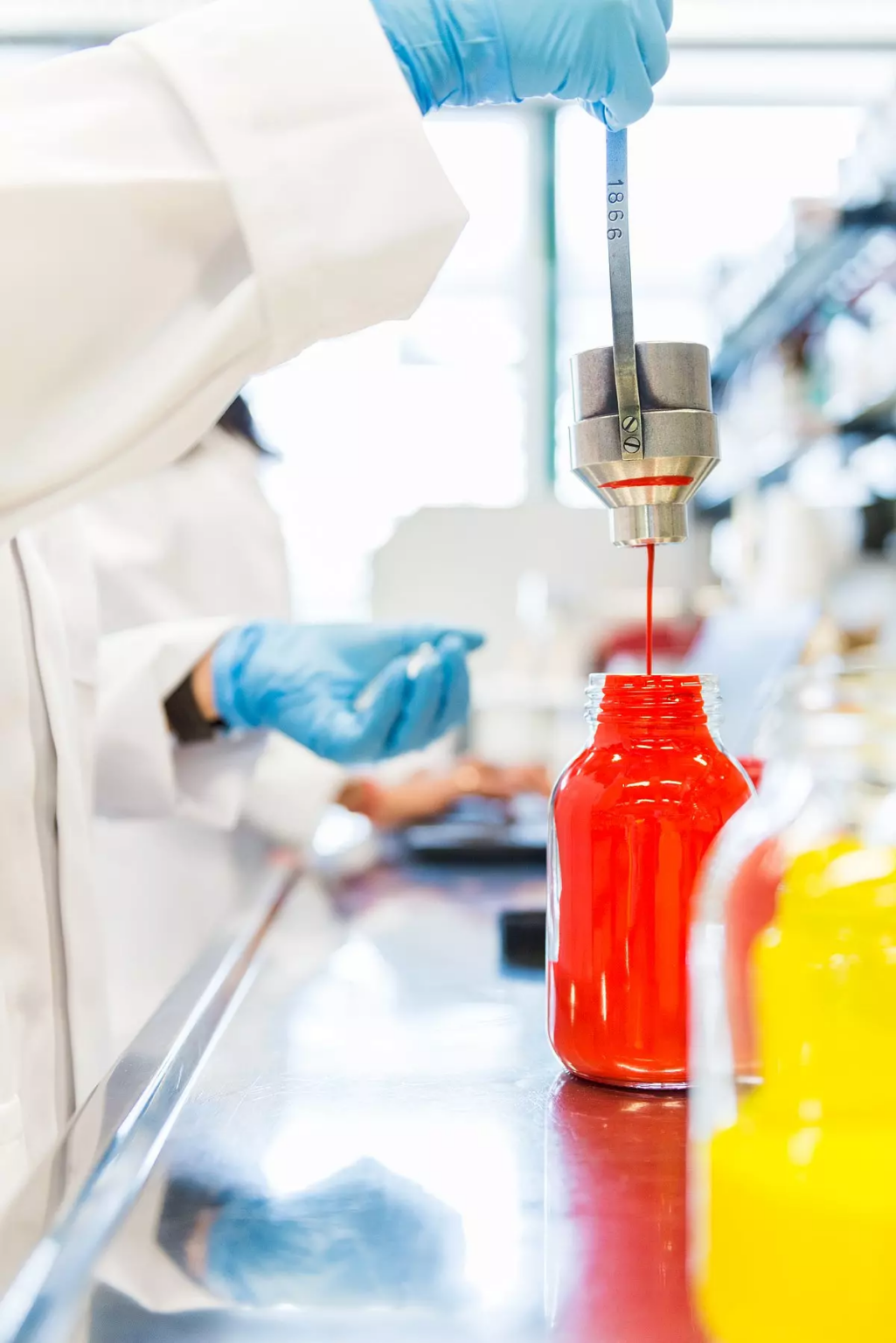
Storage of premixed solvents
Storage conditions:
- Store in a sealed, corrosion-resistant container (metal or specialized plastic container).
- Store in a cool, dry place, at a temperature of 15–25°C, away from direct sunlight and heat sources.
- Keep away from fire, sparks, or sources of ignition because the solvent is flammable (especially toluene, MEK, ethyl acetate).
Safety management:
- Clearly label the container, stating the type of solvent and the date of preparation.
- Periodically check the condition of the container to avoid leakage.
- Do not pour excess solvents down the drain or into the environment, and dispose of them according to hazardous waste regulations.
Storage time:
- Pre-mixed solvents should be used within 1–3 months to ensure quality.
- If stored for a long time, re-check the stability and test the ink before use.
Post-use disposal:
- Excess solvent or excess ink should be collected in a specialized container and sent to a hazardous waste disposal unit.
- Clean the mixing equipment and work area to avoid solvent vapor accumulation.
Safety notes:
- Toluene and MEK are volatile solvents, flammable and toxic if inhaled for a long time. Use DMC or environmentally friendly solvents (such as ethyl acetate, IPA) when possible.
- Comply with local occupational safety and environmental protection regulations.
Conclusion
Understanding the various types of BOPP ink diluents and applying them correctly is key to ensuring stable print quality, high aesthetics, and user safety—especially when printing on BOPP film and in the packaging printing industry. Each type of solvent has its own advantages and disadvantages, suited to different printing technologies and ink systems. Therefore, choosing the right diluent should be carefully considered based on production efficiency, technical requirements, and environmental safety factors to achieve superior print quality.
K-CHEM VIETNAM CO., LTD
- N6B Road, Lot F, Phu Chanh 1 Industrial Park, Phu Chanh Ward, Tan Uyen City, Binh Duong Province, Vietnam
- Tel: +84 274 362 0218
- Email: info@k-chem.vn
- Website: https://k-chem.vn



